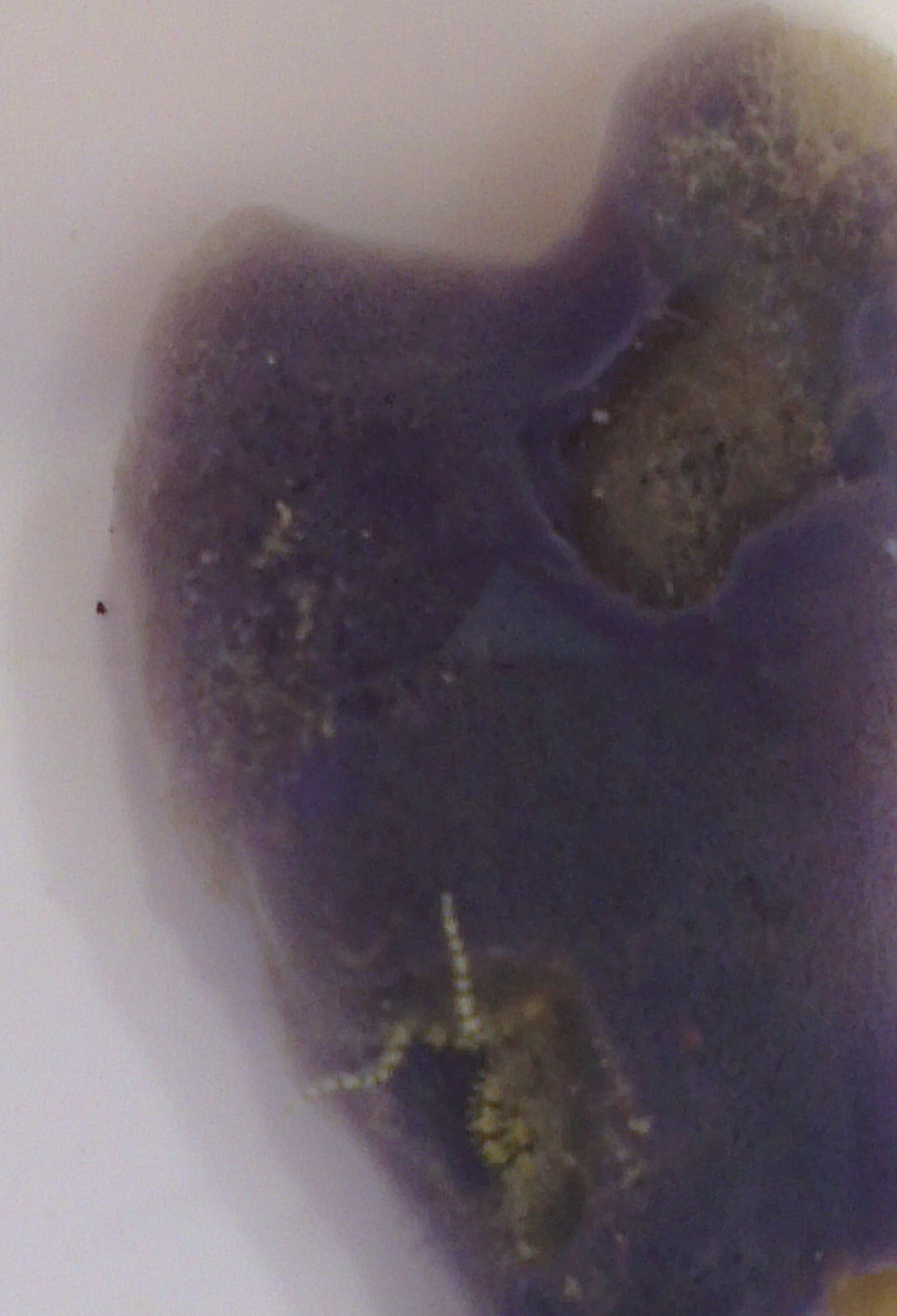Ecology
Habitat
Porifera are essentially immobile organisms residing within the benthic zone ranging anywhere from the intertidal zone to abyssal depths. As a free standing Demospongiae , this species may be found within coral reef and shallows anchored to the substratum (Wulff 2006). Due to their ability to produce sufficient internal water current for feeding, sponges are not limited by water flow in the region.
Symbiosis
Sponges, in particular free standing ones, may act as micro-ecosystems in their own right. It may be seen from images of this species (see Physical Description) that other encrusting sesile organisms (including other Porifera) may habituate the sponge’s porous outer surface.
As this species appears to have a syconoidal structure (see Body Plan ) it very likely that it may be used as a predator evasion mechanism by smaller gastropods, arthropods and other worm phylum.
. 
Fig(Left): Interaction with Arthropod species
Fig:(Right) Brittle star utaliseing sponge as hiding place predator evasion & ideal placement for food intake
Finally the mesohyl (see Cell Structure) host a wide variety of bacteria and other microbes similar to the way coral does. Studies into these symbioses have shown relationships between several sponge species and cyanobacteria micro and macro algae. The result of these symbioses was increased growth rates by all parties as well as greater resilience to poor conditions (Custodio 2007).
|